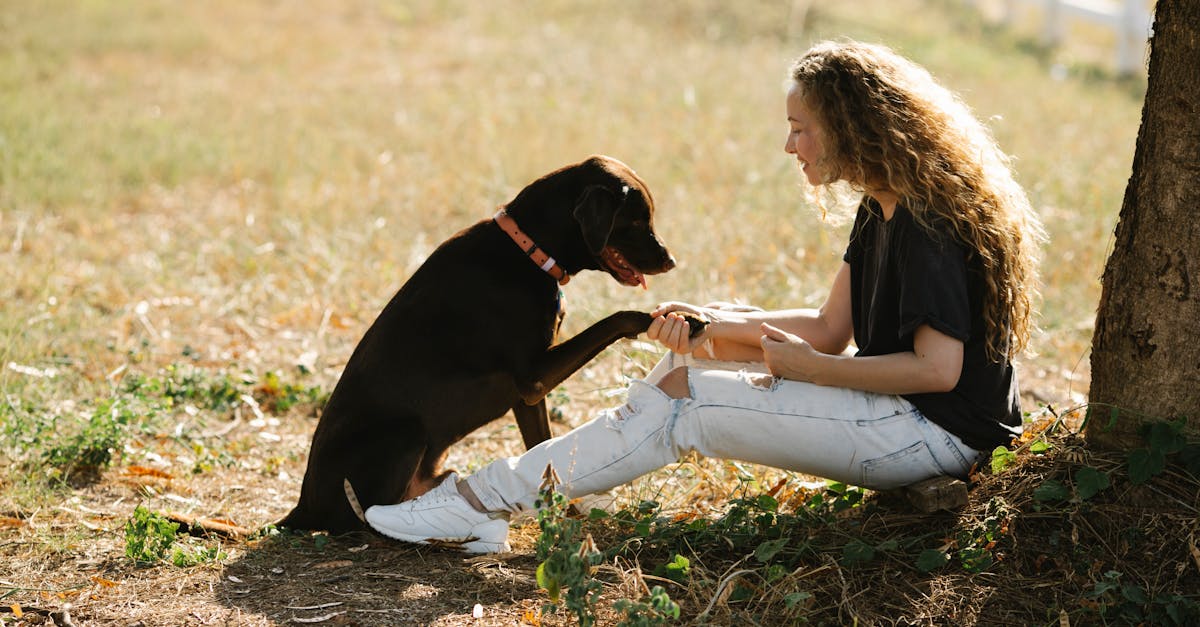Why Dogs Can’t Have Chocolate: Dangers, Symptoms & Prevention Tips
If you’ve ever wondered why your furry friend can’t indulge in a piece of chocolate like you do, there’s a good reason behind it. As a seasoned dog trainer, one of the first things you learn is the strict no-chocolate rule for our canine companions. It’s not just a matter of taste preferences; there are some serious health risks involved when dogs consume chocolate.
You might be surprised to learn the impact a seemingly innocent treat like chocolate can have on your dog’s well-being. Understanding why chocolate is off-limits for your four-legged buddy is crucial for keeping them safe and healthy. So, let’s take a closer look at why dogs and chocolate simply don’t mix.
The Dangers of Chocolate to Dogs
The Toxic Components in Chocolate
Chocolate contains substances such as theobromine and caffeine, which are toxic to dogs. These compounds can cause various adverse effects on a dog’s health, including vomiting, diarrhea, rapid breathing, increased heart rate, and even seizures.
How Chocolate Affects a Dog’s Body
When a dog ingests chocolate, the toxic components present in it can be rapidly absorbed into their bloodstream. This can lead to serious issues like dehydration, muscle tremors, restlessness, and in severe cases, it can even be fatal. It’s essential to keep chocolate and any products containing it out of your dog’s reach to protect their well-being.
Understanding Theobromine
Why Theobromine is Harmful to Canines
Theobromine, found in chocolate, is detrimental to dogs because their bodies metabolize it much slower than humans. This compound affects a dog’s central nervous system and cardiovascular system, leading to symptoms like vomiting, diarrhea, rapid breathing, increased heart rate, muscle tremors, and potentially fatal seizures.
Signs of Theobromine Poisoning in Dogs
If your dog ingests chocolate, watch out for symptoms of theobromine poisoning, such as restlessness, dehydration, and severe muscle tremors. These signs could indicate that your dog is experiencing toxicity from theobromine, requiring immediate veterinary attention to avoid further complications.
Chocolate Toxicity Levels in Dogs
Factors Influencing Chocolate Toxicity
Chocolate toxicity levels in dogs can vary based on several factors, including the type of chocolate ingested, the amount consumed, and the size of the dog. Dark chocolate, baking chocolate, and cocoa powder contain higher levels of theobromine compared to milk chocolate, making them more toxic to dogs. Smaller dogs are at a greater risk of chocolate poisoning due to their size and metabolism, which affects how quickly theobromine is absorbed into their system.
Recognizing the Symptoms of Chocolate Poisoning
It’s crucial to recognize the symptoms of chocolate poisoning in dogs to seek prompt veterinary care. Symptoms may include vomiting, diarrhea, restlessness, increased heart rate, muscle tremors, and in severe cases, seizures. If you notice your dog exhibiting these signs, especially after ingesting chocolate, contact your veterinarian immediately for advice on the best course of action to ensure your furry companion’s well-being.
Immediate Steps if Your Dog Eats Chocolate
First Aid Measures for Chocolate Ingestion
If your dog eats chocolate, the first thing you should do is remove any remaining chocolate to prevent further ingestion. Keep any wrappers or packaging to determine the type and amount of chocolate consumed.
Next, contact your vet or an emergency animal hotline immediately. Provide them with details such as the type and quantity of chocolate your dog ate, the dog’s weight, and any symptoms observed.
Monitor your dog for any signs of chocolate poisoning such as vomiting, diarrhea, restlessness, rapid breathing, increased heart rate, or tremors.
When to Seek Veterinary Care
If your dog ingests chocolate, it is critical to seek veterinary care promptly.
Consult your vet without delay if your dog displays symptoms of chocolate toxicity, including vomiting, diarrhea, restlessness, increased heart rate, muscle tremors, or seizures.
Remember, early intervention increases the chances of successful treatment for chocolate poisoning in dogs.
Preventing Chocolate Accidents
Safe Storage Tips for Chocolate
When it comes to keeping your furry friend safe, storing chocolate out of reach is crucial. Make sure to place chocolate products in high cabinets or locked containers where your dog can’t access them. Remember, dogs have a keen sense of smell, so even a closed chocolate wrapper can attract them. Keeping chocolate well-secured prevents accidental ingestion and potential poisoning.
Alternatives to Chocolate for Treating Your Dog
If you want to treat your dog, there are plenty of dog-friendly alternatives to chocolate. Opt for treats specifically made for dogs, such as peanut butter treats, carrot sticks, or frozen banana slices. These alternatives are not only safe for your dog but also ensure they enjoy a tasty snack without any health risks. Remember, it’s always better to be safe than sorry when it comes to your furry companion’s well-being.
Conclusion
Remember, chocolate is a big no-no for your furry friends. The theobromine and caffeine in chocolate can spell trouble for your pup, causing symptoms that range from mild to severe. To keep your dog safe, store chocolate where they can’t get to it, and opt for dog-friendly treats instead. Your pup will thank you for it!
Frequently Asked Questions
Is chocolate toxic to dogs?
Yes, chocolate contains theobromine and caffeine, which are toxic to dogs and can lead to symptoms like vomiting, diarrhea, rapid breathing, and even death.
How can we prevent chocolate poisoning in dogs?
Store chocolate in high cabinets or locked containers out of reach of dogs to prevent accidental ingestion.
What are safe alternatives to chocolate for dogs?
Safe alternatives to chocolate for dogs include peanut butter treats or frozen banana slices.
Why is it important to recognize signs of theobromine poisoning promptly?
Recognizing signs of theobromine poisoning promptly is crucial as immediate treatment can save a dog’s life in case of ingestion.

